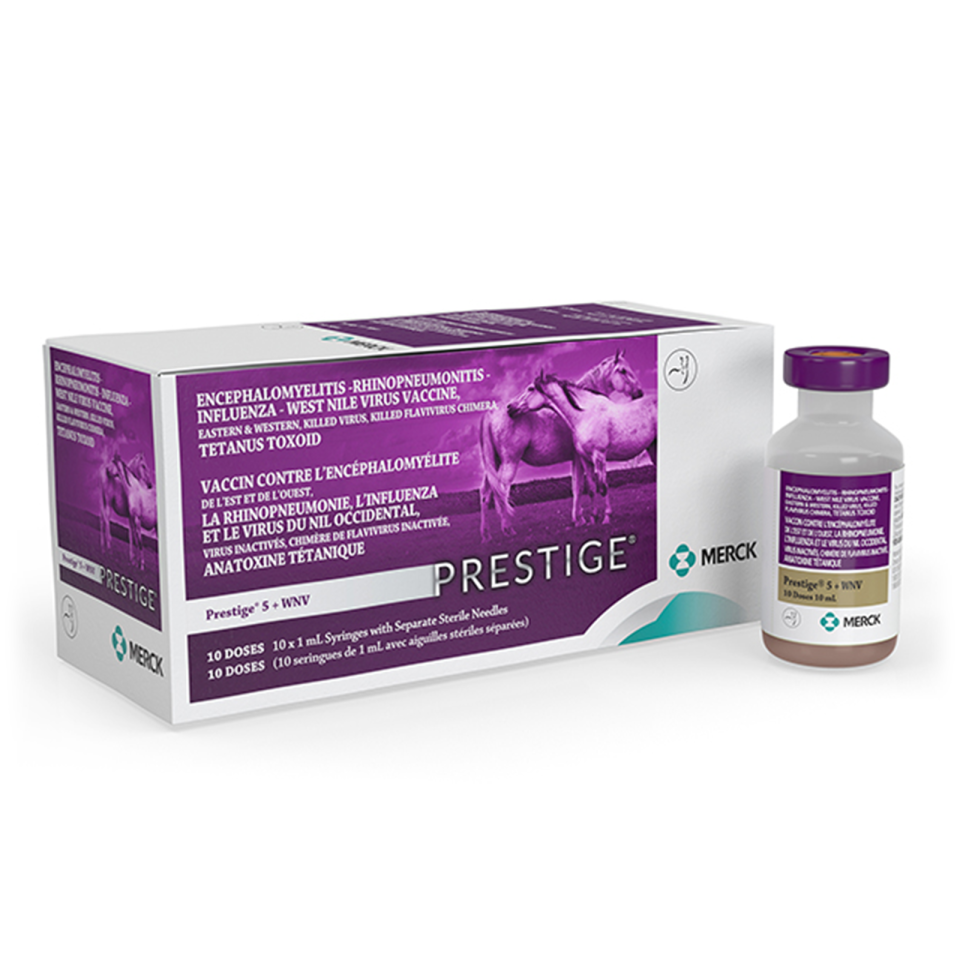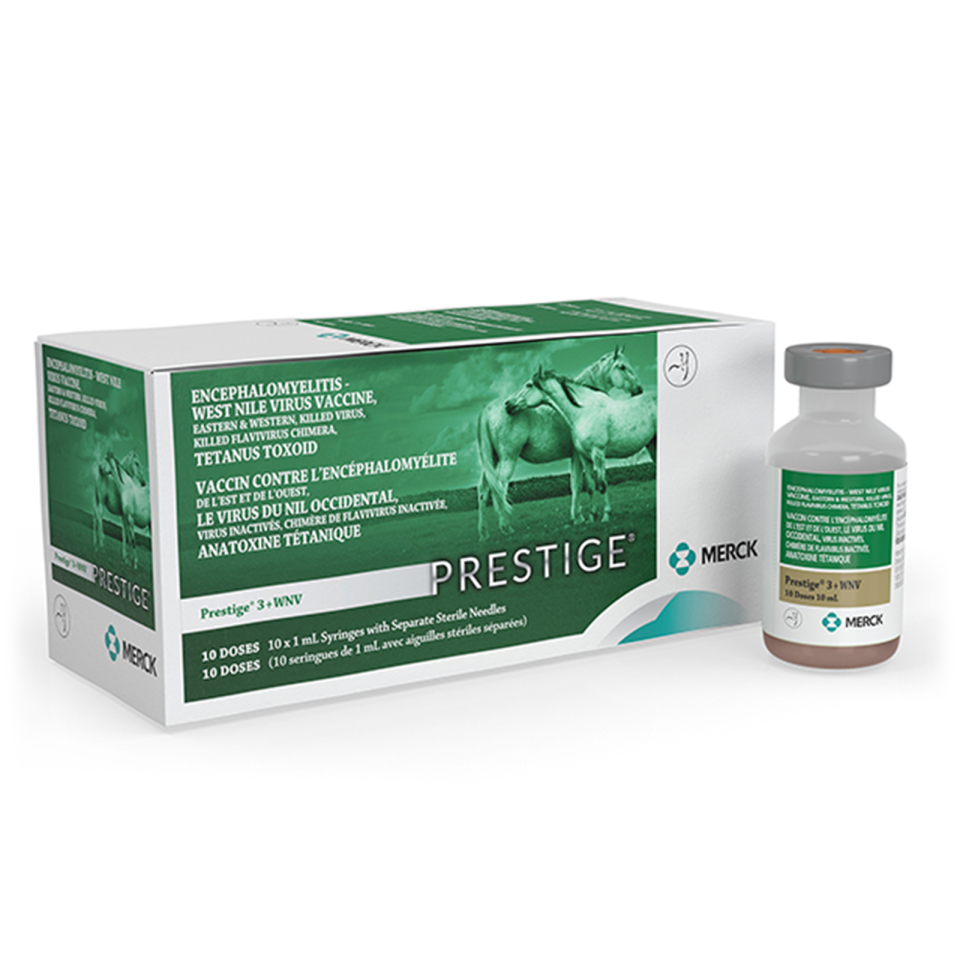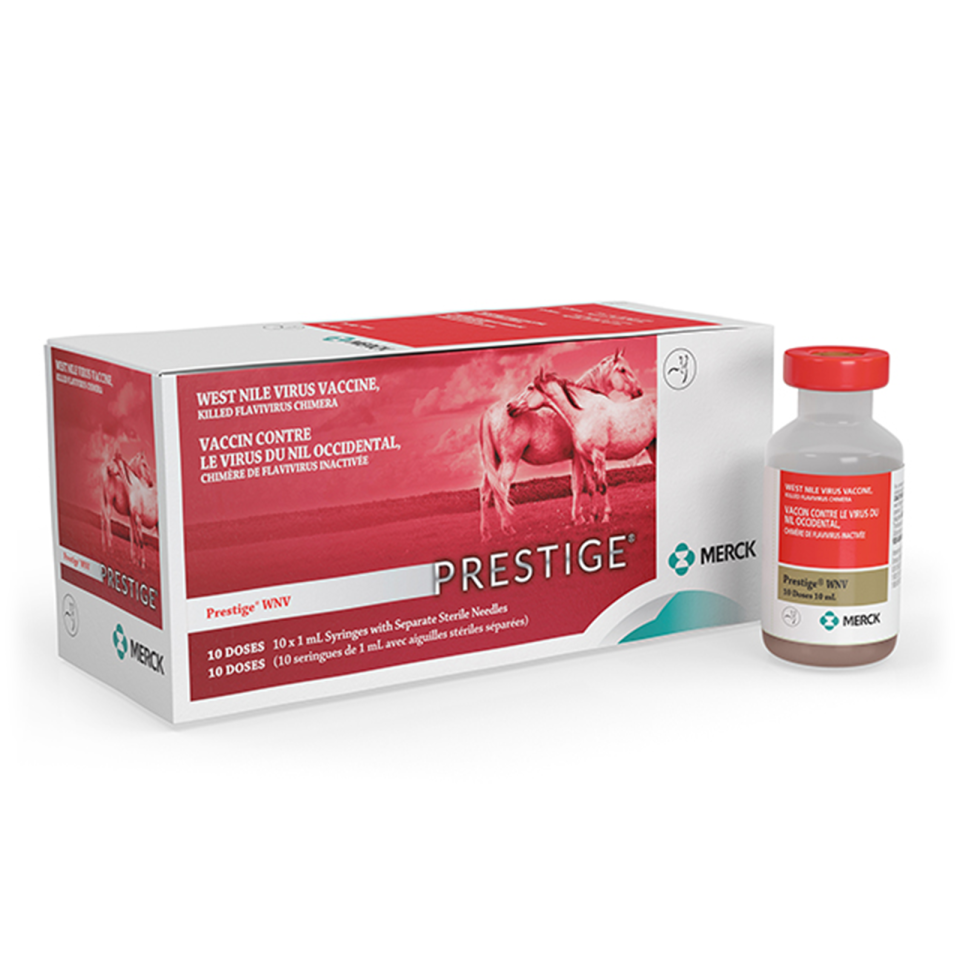
West Nile Virus
Disease Overview
West Nile virus (WNV) is a mosquito-borne viral disease that can result in fever and neurologic problems. The virus, which is transmitted from birds to mosquitoes and mosquitoes to birds, can also infect horses and humans, who are “accidental” or “dead-end” hosts. It cannot be transmitted from horse to horse, horse to person (or vice versa), or person to person. Clinical signs of WNV usually appear within 15 days of a bite from an infected mosquito. The virus entered the United States in 1999 and since then has become endemic to most of North America.
Merck Animal Health Solutions
Transmission
WNV is transmitted by infected mosquitoes, with wild birds as the host reservoir. When mosquitoes bite infected birds, they become infected and can transmit the pathogen to horses, humans, and other birds during later blood meals.
Clinical Signs
- Low-grade fever (>101.5°F)
- Incoordination
- Hind-end weakness
- Depression
- Lack of appetite
- Muscle tremors
- Teeth grinding
- Inability to swallow
- Head pressing
- Excessive sweating
- Behavior changes
- Inability to stand
Risk Factors
- Because WNV is endemic to North America, all horses are considered at risk and vaccination is recommended as a core protection strategy
- Age: Horses younger than 5 or older than 15 are more susceptible to WNV disease
- High mosquito population
References
“West Nile Virus,” American Association of Equine Practitioners, accessed July 15, 2021,
aaep.org/guidelines/vaccination-guidelines/core-vaccination-guidelines/west-nile-virus.
“West Nile Virus (WNV),” USDA Animal and Plant Health Inspection Service, Dec. 29, 2020,
www.aphis.usda.gov/aphis/ourfocus/animalhealth/animal-disease-information/equine/wnv/west-nile-virus.



